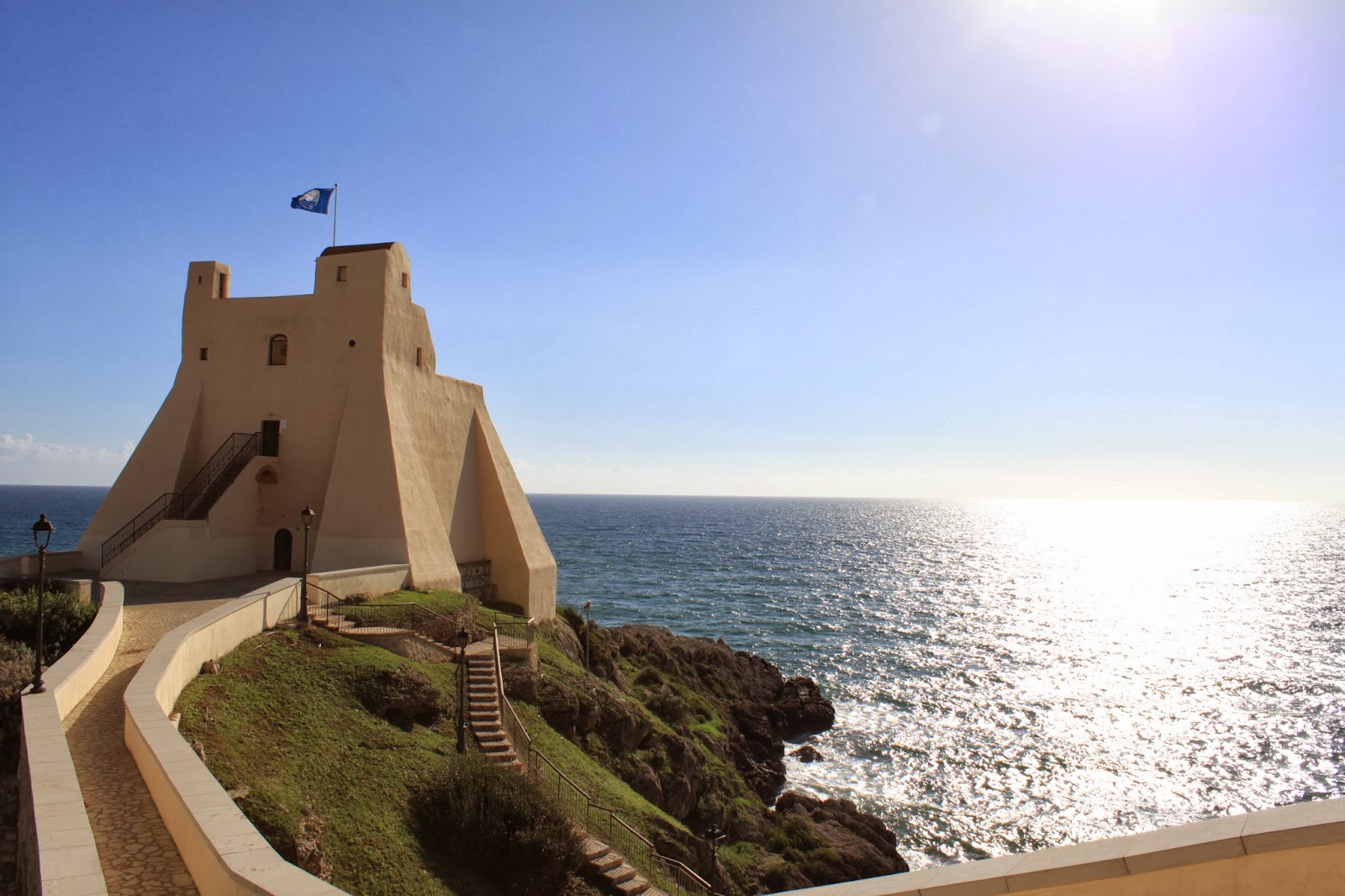First stop: Cuma and Baia
Cuma... I don't quite remember. I do remember there being the remains of two temples here, nestled in the wilderness at the top of an outcropping of rocks. One day, these temples would have been visible from the sea just south of Naples.
Ruins of a Doric Temple
And Baia. Baia was truly incredible. In ancient Rome, Baia would have been the equivalent of a Spa Getaway. The place is filled small rooms that would have had water flowing through them. There was also a beautiful temple here. This temple was an incredible place, with perfect acoustics. We were told this was the perfect place to watch someone sing, so my classmates convinced me to.
Second Stop: Capri!
Capri is by far my favourite place in Italy. It's a small island located off the Amulfi Coast that is incredibly beautiful. Nestled between two peaks, the town of Capri lies at the centre of the island. To get to it, you have to climb straight uphill for 15 minutes (25 if you are my roommates, but I got some amazing pictures while I waited for them!). From here, you can go to either of the two peaks, but we chose the "architectural" one (of course). After 45 minutes of walking along a mountain trail with picturesque ocean views framed by trees to the right, we were rewarded for our efforts with a view of the Villa Maloparte. Unfortunately, it's still privately owned, so we couldn't go down to see it! About half an hour beyond this, we met our Nemesis. 700 stairs, Straight up. So, we climbed! About halfway up, there was a "landing" which actually turned out to be a cave with an ancient temple in it. From here, we departed for the second half of the stairs, and lunch in the town. After lunch, we retraced our steps around the trails to find a set of stairs leading down to the most beautiful private beach I have ever seen. We got mattresses, drinks and just lounged around in the sun until it was time to head for the boat back to our hotel on the mainland.
The Amulfi Coast
On the Capri Trails
Arco Naturale
Swimming at the Private Beach
Third Stop: Pompei
Well, who doesn't know Pompei? The Roman city perfectly preserved (almost) by the eruption of Mount Vesuvius. The interesting thing about Pompei was that it was not the lava that killed the people and buried the town. For a day or two after the eruption, the people of Pompei watched as Vesuvius decimated their neighbors to the north, but on the second day, the winds changed. This blew a cloud of poisonous gas and soot south of the volcano, blanketing Pompei and its surrounding area. Today, you can walk through the streets as they once were, even see some of the graffiti from many years ago. Some of the houses have even been restored to amazing conditions, where you can walk around and see it as it was seen before the eruption. One of these houses was the house of Happy Julie, which archaeology tells us was a brothel. This house had marble columns, showing the wealth of Julie, the owner. Unfortunately, the house was closed, but when has that ever stopped an architecture student? I don't understand why so much time would be spent restoring something, only to block people from seeing it. Another house that was restored impeccably was the Villa of Mysteries. This was a small villa located outside of the city walls, and contained within it a room decorated with a fresco for which the house is named. This fresco depicted the induction of a woman into a cult, a cult within which the penalty for revealing the secrets of induction into it warranted death. Why was this fresco allowed to stay, and who painted it? All interesting questions, all unanswered, hence the mystery!
Roman Forum in Pompei
House of Happy Julie
Negatives of human bodies discovered in the hardened ash
Villa of Mysteries
Fourth Stop: Paestum
For the entirety of this trip, we stayed in a beautiful beach town called Paestum. Paestum is a unique place, because it sits on a rock, floating in a marsh. Because of this, the area is not affected by earthquakes. The ancient Greeks figured this out early, and built three temples here. These temples, each dedicated to the the gods, are the best preserved in the world because they have not had to deal with earthquakes over the years. It is unknown who the temples are dedicated to, but there is speculation that two are for Hera, the Goddess of Motherhood. Paestum is also known for Buffalo Mozzarella. We saw all the water buffalos on the way to the temples, and were told to buy the cheese for lunch, so we did! We bought sandwiches and had a lovely picnic on the beach, followed by swimming and relaxation!
Paestum Beach at Night
Doric Temple at Paestum
Doric Temple at Paestum
Doric Temple at Paestum
The Diver, a Fresco Painting from the Inside of an Atruscan Tomb at Paestum
Last Stop: Sperlonga
Sperlonga was a beautiful stop on the way back to Rome after a wonderful trip. In Sperlonga is a Villa famous from antiquity, the Villa Tiberius. This Villa has a cave located beside the ocean, in which the owner once hosted Tiberius, the Emperor of Rome, for dinner. This cave was connected to the Villa by a series of tunnels and acted as a formal dining room. Sperlonga also has a beautiful beach where we spent the afternoon and took a class of picture of the 60 students who made it through the 4 years of school that proceeded our Rome Term.
Villa Tiberius
Ocean at Sperlonga
And after these 5 days were done, we headed back to Rome for October!
Ciao for now!
















No comments:
Post a Comment